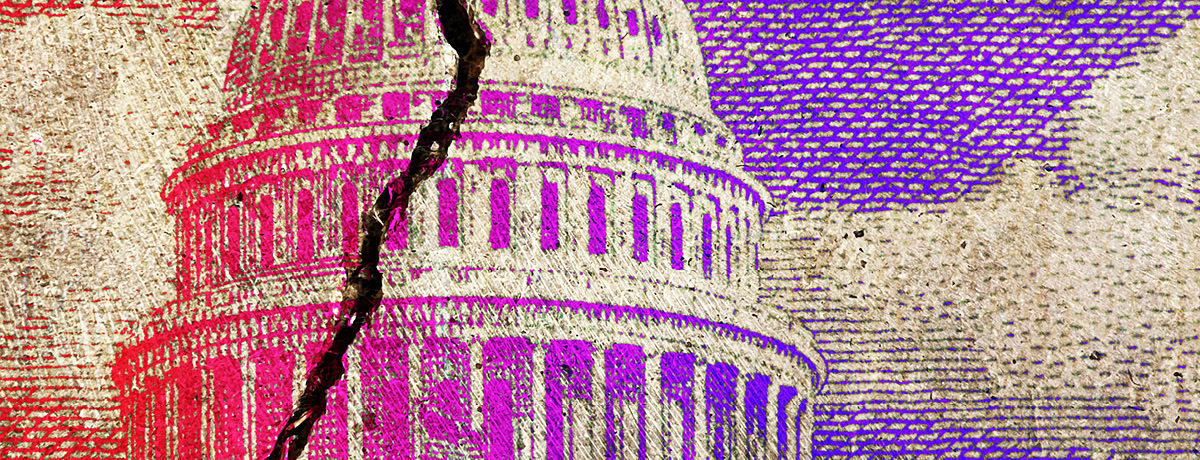The intricate nature of U.S. criminal law demands not only vigilance but also thorough comprehension of its fundamental principles and structure.
Distinct from civil law, criminal law in the U.S. is vital for regulating illegal activity, maintaining social order, and safeguarding the public from harmful actions. It establishes clear boundaries of acceptable conduct, providing a framework within which society can function smoothly.
Criminal law in the U.S. encompasses a wide spectrum of offenses, from minor infractions, such as traffic violations, to major felonies like murder and armed robbery, each carrying different legal consequences. These consequences can range from fines and community service to lengthy prison sentences, reflecting the severity of the offense.
Governed by both federal and state statutes, U.S. criminal law represents a complex network of legal authorities. Federal law addresses offenses crossing state lines and involving federal interests, such as terrorism, drug trafficking, and immigration violations, while state law covers crimes within individual jurisdictions, including everything from drug-related offenses to crimes like theft, sexual assault, and homicide. Each state also has its own unique set of laws and penalties, adding another layer of complexity.
Criminal justice reform in the United States has reached a pivotal moment, as data indicates widespread public support for enhancing the criminal legal system to foster a more humane, just, and equitable society. Key elements of this reform include addressing sentencing disparities, enhancing prison oversight, and abolishing solitary confinement. These legislative changes have the potential to significantly transform criminal law in the U.S.
This article highlights noteworthy pending criminal justice reform legislation, such as the Equal Act, the First Step Implementation Act, and the Federal Prison Oversight Act. These initiatives are poised to advance criminal justice reform substantially. With robust bipartisan backing, these legislative measures are anticipated to gain traction as the nation approaches the upcoming presidential election, thereby affecting millions of individuals.
This overview presents a factual and balanced perspective, aiming to inform stakeholders of the substantial implications these reforms may have on the future of criminal law in the U.S.
An understanding of U.S. criminal law's foundations is crucial for policymakers, legislators, legal professionals, and citizens aiming to improve society in the future. By grasping the nuances of criminal law, stakeholders can develop more effective policies and reforms that enhance justice, reduce crime, and ultimately foster a safer, more just society. With this knowledge, everyone can better navigate the legal system, ensuring their rights are protected while contributing positively to the community.
Reform on the Horizon
With the upcoming U.S. elections in November, voters will determine the nation's future leadership, with public safety and criminal justice reform emerging as pivotal issues. The Justice Action Network reports that 67% of voters advocate for significant reform or a complete overhaul of the criminal justice system.
The vast size and substantial costs of the U.S. criminal justice system present numerous challenges that policymakers must address through bipartisan support and policies centered on accountability and fairness. Certain long-standing practices in criminal law, often based on anecdotal rather than empirical evidence, risk increasing recidivism and system costs.
Regardless of the election outcomes, numerous criminal justice policies are slated for 2024 and beyond, appealing across the political spectrum. These policies have garnered strong bipartisan support and are poised to become law, all premised on the same goal—to make the criminal justice system safer for incarcerated individuals, system professionals, and the public.
All the policies discussed in this article have the support to eventually be written into law, in the hope that the criminal justice system can be safer for incarcerated individuals, the professionals maintaining it, and the public.
Disparities in Sentencing
According to a recent study from the Justice Department, roughly half of those currently incarcerated in federal prisons in the U.S. are serving prolonged sentences for drug-related offenses.
On average, individuals serving time for drug crimes typically have sentences longer than 10 years, with U.S. federal law mandating that 85% of those sentences be served to completion.
The stark reality of the issues currently plaguing the U.S. criminal justice system is that a large percentage of offense types in both state and federal prisons are not drug-related offenses, but instead violent crimes.
The average taxpayer spends roughly $43,000 each year on every incarcerated individual, under the premise it enhances community safety and lowers crime rates.
However, as of 2022, recidivism rates across the country for people who've completed their sentences in federal and state prisons have soared to almost 50%.
In 2018, former President Donald Trump signed the First Step Act with Congressional backing, to combat the growing surge in recidivism. The bipartisan legislation aimed to safely reduce most federal drug offenses while creating recidivism reduction programs in prisons.
Those who participated in the initial phase of the First Step Act's programming saw drastic reductions in recidivism rates, as opposed to existing populations in other federal institutions, dropping to roughly 12%.
Following the same legislative blueprint as the First Step Act and its precursor, the Fair Sentencing Act of 2010, Congress has made several attempts to resolve the ever-present sentencing disparity among drug-related offenses through the Equal Act.
Proposed in 2021, the Equal Act aims to abolish the current disparity between crack and cocaine offenses, a bygone relic of the War on Drugs that has since impacted predominantly Black communities at disproportionate rates.
Despite no chemical difference in the composition of either drug, 77% of individuals facing criminal charges under these strict laws are Black.
With widespread co-sponsorship from Democrats, Republicans, law enforcement agencies and advocacy organizations, the Equal Act passed in the House by a significant majority (361-66) in 2021, but has yet to hit the Senate floor for a vote.
Strictly targeting the growing sentencing disparities linked to crack cocaine, the Equal Act fails to account for many other federal drug sentences and the costs they carry.
In the same vein as the Equal Act, the First Step Implementation Act would also build upon the existing provisions of the First Step Act by allowing U.S. courts to exercise its provisions retroactively. Additionally, the First Step Implementation Act would first consider an individual's criminal history holistically, rather than immediately casting the mandatory minimum sentence.
Right now, roughly 10,000 people serving time in federal prison would likely have shorter sentences if they were tried post-First Step Act.
The Smarter Sentencing Act, another promising criminal justice reform proposal under Senate consideration, would empower judges to assess each criminal case individually, deciding when the strictest sentences are warranted, rather than retroactively applying provisions.
This approach seeks to ensure that individuals are held accountable under the law, without being subjected to unduly lengthy sentences that do not match the severity of the crime.
Additionally, the Smarter Sentencing Act would preserve existing sentencing enhancements and provisions that increase the potential sentence for a crime, such as violent crimes.
Oversight or Afterthought?
Each year, the Federal Bureau of Prisons incarcerates roughly 160,000 individuals nationwide, spanning 1,566 state prisons, 98 federal prisons and 3,116 county jails, with a system-wide cost of $182 billion.
These figures don't account for the approximate 1.9 million people already incarcerated in various federal and state-run facilities.
Even with the bureau's size and scope, the criminal justice system in the U.S. is consistently underfunded, riddled with staffing shortages, and dependent on dated processes that perpetuate correctional violence.
Structured legislation can enhance criminal justice transparency and improve prison conditions, providing better resources for those living and working within the system.
There is no oversight committee or legislative body overseeing the Bureau of Prisons. Firsthand accounts from incarcerated individuals and prison staff show there are major limitations in reporting serious issues in facilities, whether it is deteriorating conditions or health and safety hazards.
The Federal Prison Oversight Act seeks to address these ongoing problems, empowering the Department of Justice's inspector general to conduct risk-based assessments of prisons. By appointing a Bureau of Prisons ombudsperson or elected oversight official, investigations into maladministration and misconduct can be prompted based on a reported complaint from corrections staff or an incarcerated individual.
The bill, which has amassed bipartisan support in the House and Senate, passed in the House by a convincing margin (392-2) in May. Currently, the bill has enough backing to move forward undeterred on the Senate floor.
Of the 1.9 million incarcerated people in the U.S., more than 10,000 have experienced or currently live in solitary confinement, another critical area of criminal justice reform concern.
The Bureau of Prisons has officially recognized that solitary confinement is not an adequate solution to misconduct and, more often than not, further exacerbates existing issues. Data proves that individuals in solitary confinement are at a higher risk of mental health issues and self-harm.
Other effective ways of mitigating violence and other behavioral infractions without solitary confinement include short-term separation periods, rehabilitative programs, mental health and substance abuse treatment and individual or group therapy.
In September 2022, President Joe Biden issued an executive order to reduce solitary confinement, resulting in several bills being introduced in Congress to eliminate it entirely, namely the Solitary Confinement Reform Act.
Before the election results are in and the 119th Congress sees its end, this historically overused practice should be drastically reduced in state and federal systems.
The Future of U.S. Criminal Law
Criminal justice reform in the U.S. is no longer up for debate—studies show that a significant majority of Americans support improving the criminal legal system to create a more humane, just, and equitable society.
The push for U.S. criminal justice reform encompasses various pressing issues, such as addressing sentencing disparities that disproportionately affect marginalized communities and enhancing oversight of prison conditions to ensure they meet humane standards. Additionally, efforts to eliminate solitary confinement, often criticized for its detrimental psychological effects on inmates, are gaining traction in public opinion.
Upcoming criminal justice reform legislative changes have the potential to profoundly reshape criminal law in the U.S., offering hope for a system that better balances justice and compassion.
The reforms discussed in this article, including the Equal Act, which aims to address inequities in sentencing for drug-related offenses; the First Step Implementation Act, which focuses on reforming federal prisons and improving rehabilitation efforts, and the Federal Prison Oversight Act, designed to ensure accountability and transparency within the prison system, have the power to significantly advance criminal justice reform in the U.S.
With strong bipartisan support, these legislative criminal law provisions are expected to gain momentum as they head into the upcoming presidential election cycle. The collective efforts to push these criminal justice reforms forward exemplify a growing national commitment to rethinking and reshaping the U.S. criminal justice system for the better.



























